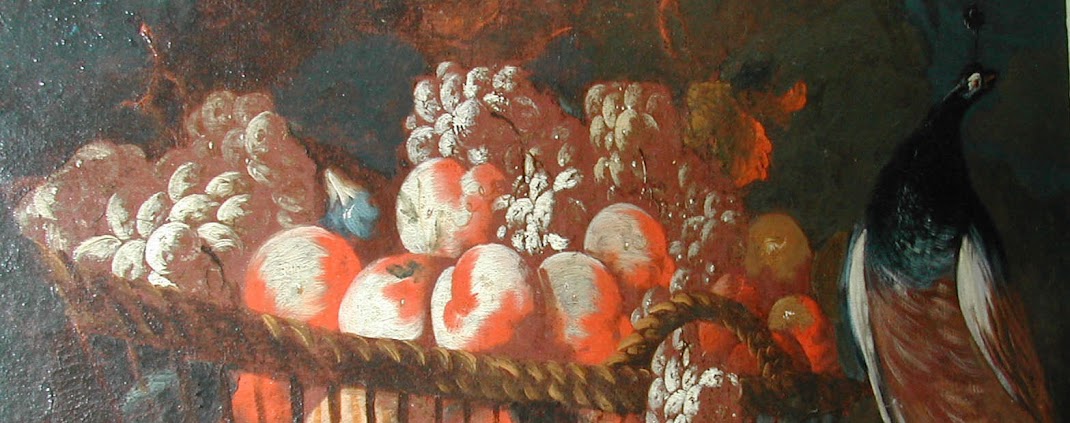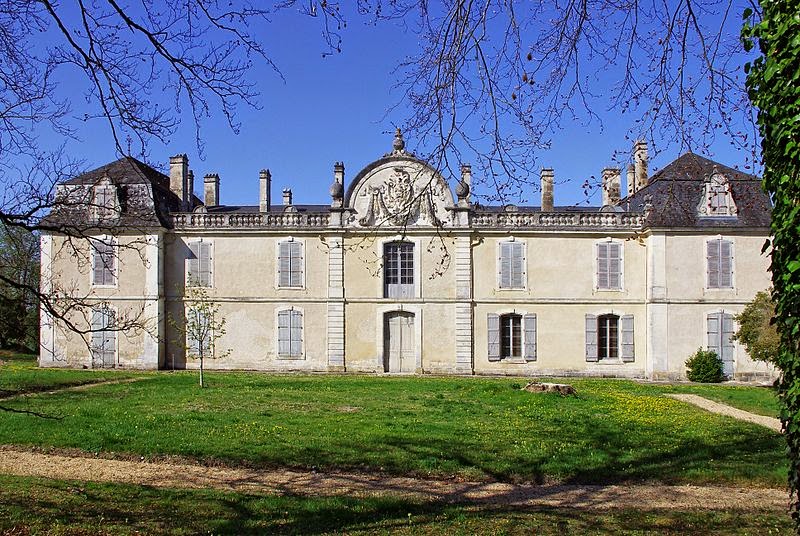A good friend from Germany arrived last week.
He loves La Pouyette, he loves the Périgordian Châteaux,
he loves a little "ride" over the countryside....
and he loves fresh Oysters from the nearby Atlantic coast.
After weeks and weeks of grey, coldish and drizzling weather,
finally some signs of Spring - blue sky and bright sunshine.
Just right for a short trip through the countryside in our neighbourhood.
Here some snap shots:
Villebois-Lavalette:
A commune in the Charente department in southwestern France,
at the Périgord-Charente border, about 20 KM from La Pouyette.
It is the seat of the Canton of Villebois-Lavalette,
and located on a prominent hill which has a Château dating back to Roman times
A commune in the Charente department in southwestern France,
at the Périgord-Charente border, about 20 KM from La Pouyette.
It is the seat of the Canton of Villebois-Lavalette,
and located on a prominent hill which has a Château dating back to Roman times
19th Century
It is thought to be named after a "town located in the woods next to
the river Ne"
(Ville - town, boisne - wood next to Ne).
There is another
possible explanation - that it was originally called "Villa bovis" or
place of the ox.
In the centre of the old town,

there is a 500 year old market hall
that dates back to the 16th century,


there is a 500 year old market hall
that dates back to the 16th century,

with a beautiful roof- and beam construction

It was restored in the 19th century, also the columns have been replaces again recently,

It was restored in the 19th century, also the columns have been replaces again recently,
and it is now an historic monument.
*

*

"in preparation".....

.....ready for consuming à la place....

what else do we need!
*
*

*

*

A 17th-century sundial can be seen on a house that overlooks the market hall.


*

On our way uphill to the Château....
*

*

*
*


The 180 metre high hill upon which the town and château are now located
had been the site of a Gallic oppidum and a Roman castrum until in the 8th Century,
a château was started to be built by the Fulcher family.

had been the site of a Gallic oppidum and a Roman castrum until in the 8th Century,
a château was started to be built by the Fulcher family.

It was continued by the Helie family and finally completed in the 12th century by the Ithier family.
Ithier was a powerful lord who participated in the Crusades and erected a Romanesque chapel in the château close to the outside wall....
that was used by pilgrims of Santiago de Compostela as refuge and accommodation.
that was used by pilgrims of Santiago de Compostela as refuge and accommodation.
*
In the 13th century, the Lusignan family (the Count of Angoulême), added 2 parts to the primitive chapel, enlarged the château's enclosure and walls, and built 7 towers to turn it into a formidable fortress.

Because of its commanding position, it became a much sought after location. In the Hundred Years' War, the English occupied it until it was reclaimed by the Duke of Berry in 1376. During the Wars of Religion, the town and château was taken by the Protestants until they were overthrown by the Catholics.

In 1589, the Knight of Aubeterre (leader of the League of Angoumois), transformed the château into a garrison for troops. The Duke of Epernon besieged it and forced out the troops by using large canons.
In 1597, Jean Louis de Nogaret de La Valette, Duke of Epernon, Governor of the Angoumois from 1554–1642, acquired the land around the town and established it as a duchy under the name of Lavalette.
So from 1622 onwards, the town took the name Villebois-Lavalette.

The Duke of Navaille purchased the Château in 1660 and rebuilt a princely castle.
Only one wall was kept of the original fortress.

During the French Revolution, the château was besieged and damaged.
It became an army food storage supply centre and prison.
After the revolution it became the main prison for several surrounding departments.

In 1822, a fire destroyed half of the Château.
Only the north wing and a few sections of the outside wall survived.
It was then used as a school until 1912.
From 1914 to 1998, it was owned by the Fleurry family who then sold it in 1998 to a Mr Torres.
It has been partially restored and is now open for visits from May to September.
*
*
*
*

On our way back to La Pouyette, to the Périgord,
we pass:

Champagne la Fontaine
*
*
*

*

*
*
*
*
*
Vendoire:
Le Château de Vendoire, daté de la fin du XVIIe siècle,
est bâti sur une terrasse proche de l’église,
à l’emplacement d’un premier Château,
dit de Bourzac, élevé au milieu du XVIe siècle.

Il est commandé par François-Isaac, comte de Bourzac, après les ravages des guerres de Religion.
Il est alors choisi comme nouveau chef-lieu dont l’importance n’est pas moindre :
assurer la défense frontalière du Périgord, le long de la Lizonne.

*
*

*
*
*
*
*
*
We had a wonderful "outing"!
......

...."light flooded" evenings....

....at La Pouyette...

*
with dramatic....
....****....
....beautiful...
...."Hollywood"-like....
*
*
...sunsets over the weekend....
*
*
*
Wish you all a very good week!
est bâti sur une terrasse proche de l’église,
à l’emplacement d’un premier Château,
dit de Bourzac, élevé au milieu du XVIe siècle.

Il est commandé par François-Isaac, comte de Bourzac, après les ravages des guerres de Religion.
Il est alors choisi comme nouveau chef-lieu dont l’importance n’est pas moindre :
assurer la défense frontalière du Périgord, le long de la Lizonne.

*
*

*
*
*
*
*
*
We had a wonderful "outing"!
......

...."light flooded" evenings....

....at La Pouyette...

*
with dramatic....
....****....
....beautiful...
...."Hollywood"-like....
*
*
...sunsets over the weekend....
*
*
*
Wish you all a very good week!

































Oh, your retelling of history along with the photographs is wonderful. I learn so much each time I come to Perigord.
ReplyDeletexx's
A wonderful stroll around your enchanting area.Really enjoyed it Karin!
ReplyDeleteUnbelievably gorgeous! Thank you so much for sharing.
ReplyDeleteBlogging is the new poetry. I find it wonderful and amazing in many ways.
ReplyDeleteI am extremely impressed along with your writing abilities, Thanks for this great share.
ReplyDeleteBlogging is the new poetry. I find it wonderful and amazing in many ways.
ReplyDelete